
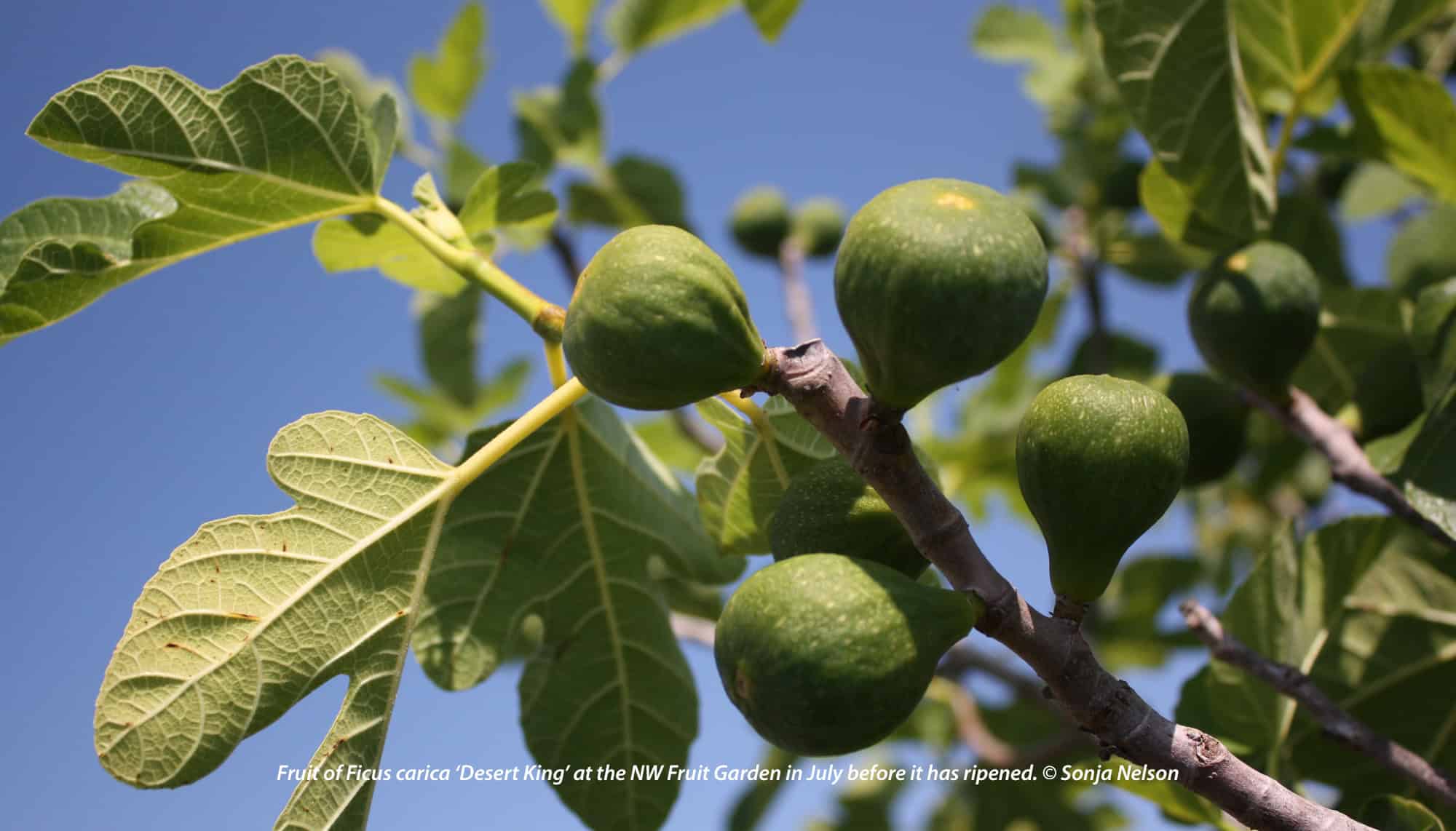
The Fig Tree-A Horticultural Challenge
Though best suited for a Mediterranean climate, figs can be successfully grown in the Pacific Northwest.
Subscribe to the Blog >By: Sonja Nelson, Skagit County WSU Extension Master Gardener
Gardeners are adventurous folks, always on the lookout for a new and captivating plant to add interest to their gardens. One such beckoning horticultural challenge is the edible fig tree (Ficus carica). An example of a mature, edible fig can be found at the edge of the NW Fruit Garden on State Route 536 west of Mount Vernon. Located next to the Skagit County WSU Extension Master Gardener Discovery Garden, the NW Fruit Garden features over 200 fruit cultivars, including fig trees.
Although edible figs are widely grown in Europe’s warm Mediterranean basin, the climate of the Pacific Northwest is too cool for many varieties. However, the mature edible fig is part of NW Fruit’s experimental planting program to find the best fruits for growing in our area.
The fig specimen is the cultivar ‘Desert King,’ about 10 feet tall. The white bark on this multi-trunked, deciduous shrub is a pleasing contrast to its large, three-lobed, dark green leaves veined a lighter green. In July, the pear-shaped fruit is dark green (see photo), but the skin changes to greenish white when ripe.
One of the First Plants Cultivated
Each plant in our gardens has a story to tell. However, the fig tree story may be one of the most captivating. Judging from fossils found dating from 9400-9200 BC in the Jordan Valley, which today forms the border between Jordan and Israel, the fig is believed to be one of the first plants cultivated by humans, preceding the domestication of wheat, barley, and legumes by a thousand years. Figs were widespread in ancient Greece and described by Aristotle. They were also a common food source for the Romans. Rome’s first emperor, Augustus, was poisoned with figs from his garden that his wife smeared with poison. The well-known Biblical source in the Book of Genesis refers to Adam and Eve using fig leaves to cover their private parts in shame for eating the forbidden fruit. From the 15th century, the edible fig was grown in Northern Europe and the New World. In 1769, missionaries brought the first figs to California.
The Interesting Botany of the Fig
The edible fig fruit humans consume for its delectable sweetness is produced by Ficus carica, one of over 800 fig species in the genus Ficus. The three types of edible figs are distinguished from one another by their pollination process. The type most amenable to growing in our area is the “common fig.” The fruit skin, referred to by botanists as its “syconium,” is 1-2 inches long and green in color that ripens to purple or brown. Its interior is lined with unisexual flowers that produce seeds through a process called “parthenogenesis,” a natural form of asexual reproduction. The single-seeded fruits line the inside of the syconium, producing soft, reddish flesh containing crunchy seeds.
Most varieties of figs can produce two crops a year. The first crop is called “Breba,” which bears fruit on last year’s wood, and the second is called “Main,” which bears fruit on the current year’s wood. The Puget Sound region is usually too cool to ripen the Main crop.
Fig Research and Much, Much More
Figs are among the many varieties of fruit tested for research in the NW Fruit Garden. Recently, a new row of fig trees was planted with eight fig trees, and another row will be planted soon. The group is also planning to install a protective structure to demonstrate how to cover and protect figs in winter.
NW Fruit’s search for fig tree varieties that grow well in the Northwest extends worldwide. For instance, NW Fruit volunteer and co-chair Sam Benowitz traveled to the Brittany region in northwest France to observe and get a cutting of the fig variety ‘Madeleine de deux Saisons’ to grow and test at NW Fruit. Other new varieties include: ‘Little Ruby,’ ‘Olympian,’ ‘Brown Turkey,’ ‘Nordland,’ ‘Grantham’s Royal,’ and ‘Lattarula.’ Benowitz is a longtime volunteer at NW Fruit. Sam established and owned Raintree Nursery near Morton, Washington in 1972, building it into one of the country’s leading edible fruits nurseries, prior to selling it in 2018. His enthusiasm for his work is characteristic of the garden volunteers caring for and testing the many fruit varieties.
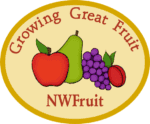 The Western Washington Fruit Research Foundation, now called NW Fruit, was created in 1991 to help support the tree fruit research at the Washington State University (WSU) Northwestern Washington Research & Extension Center (NWREC) Fruit Horticulture Program in Mount Vernon. It is dedicated to supporting research and educating the public about the special fruit-growing conditions of the Pacific Northwest region.
The Western Washington Fruit Research Foundation, now called NW Fruit, was created in 1991 to help support the tree fruit research at the Washington State University (WSU) Northwestern Washington Research & Extension Center (NWREC) Fruit Horticulture Program in Mount Vernon. It is dedicated to supporting research and educating the public about the special fruit-growing conditions of the Pacific Northwest region.
The six-acre NW Fruit Garden currently has over 200 fruit cultivars growing for research and demonstration to the public.
Growing Figs in the Ground
The climate of the Pacific Northwest differs from that of the Mediterranean region, where the species Ficus Caria is native. Although our climate is sometimes compared to a Mediterranean one because of its warm, dry summers, it falls short of being ideal for many varieties of figs. Hence, Sam Benowitz traveled to France’s Brittany area to find edible fig varieties from a climate more like ours and test them at NW Fruit.
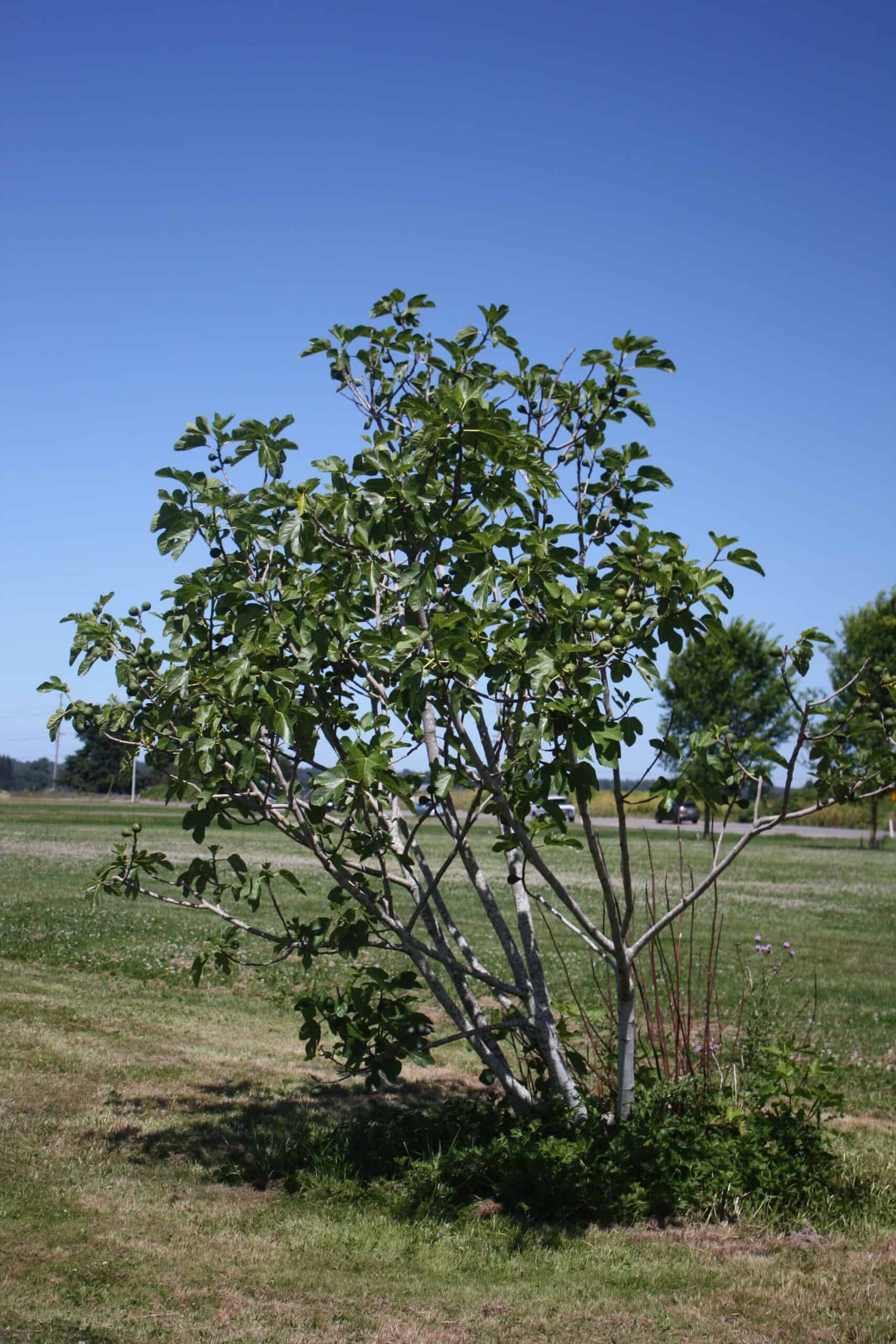
Ficus carica ‘Desert King’ at the NW Fruit Garden. Photo: © Sonja Nelson
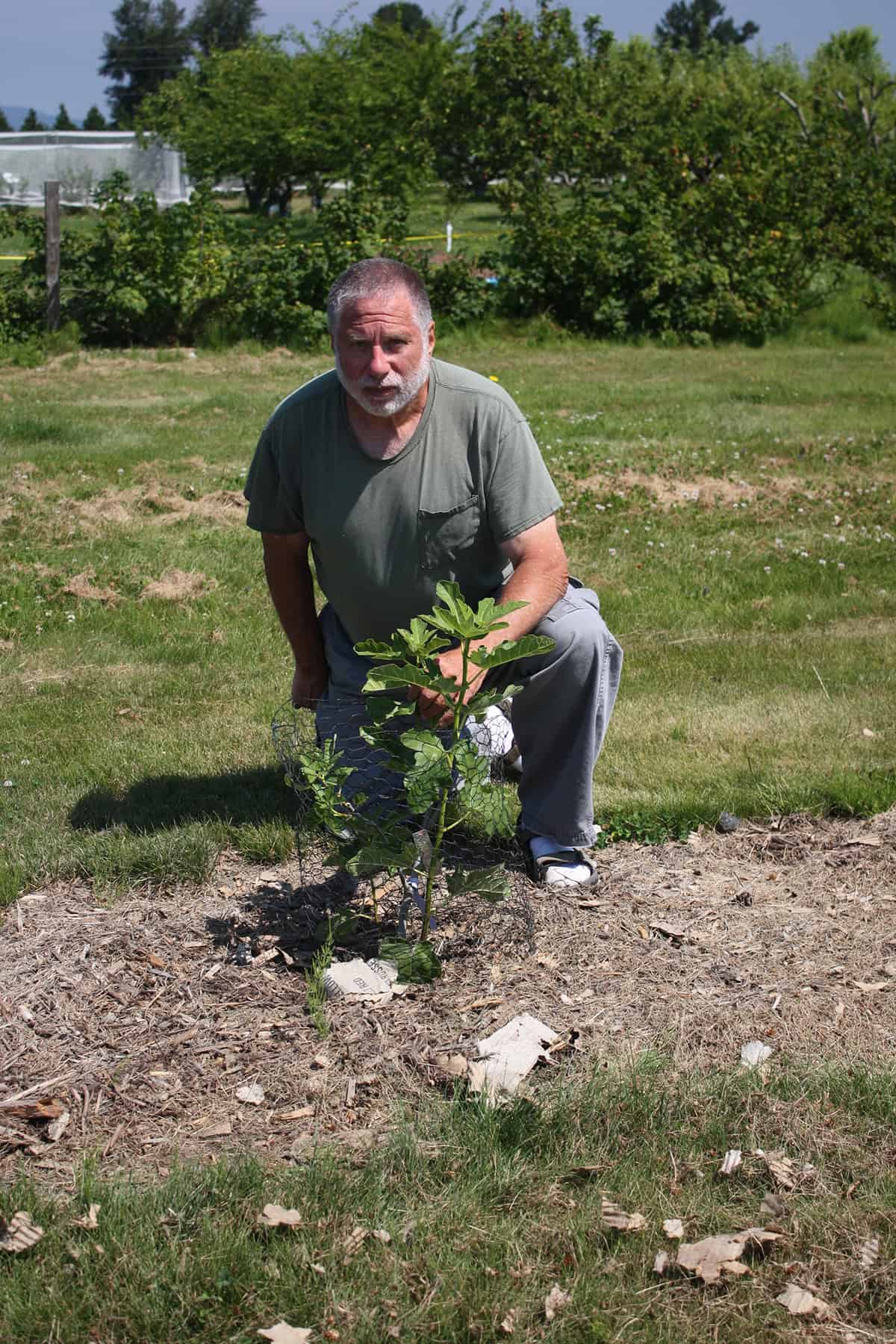
NW Fruit volunteer Sam Benowitz kneels next to a recently planted variety of Ficus carica. This fig is one in a row of eight fig trees planted at NW Fruit to test for adaptability to the Pacific Northwest climate. Photo: © Sonja Nelson
The edible fig, Ficus carica, and its varieties thrive in rich soil and a warm microclimate. The high temperatures sometimes experienced in our area should not be a problem for figs. However, in temperatures below 10 degrees F, plants may need cover. From his experience at NW Fruit, Benowitz believes the most significant shortcoming of our climate for figs is the lack of summer heat during the growing season. The program experiments on-site with techniques, such as walls that capture heat. Regular watering of the fig trees in the garden is necessary, especially as they start. An irrigation system is set to water the figs once a week throughout the summer.
The soil for in-ground figs should be slightly acidic (6.0 – 6.5). Allow spread for fibrous, shallow root systems. Do not fertilize at planting time, but mulch with compost. Training a young fig tree involves spacing the branches and forcing them to one main trunk. Figs can also be trained to an open center or vase shape, allowing good light penetration into the canopy. In training a newly planted tree, cut it to 2 to 3 feet in height, forcing lateral buds to produce new, low branches. In the following winter, select three to four main branches, cut them back to 30-36 inches, and remove the rest. Annual pruning, which should be done in the dormant season, is usually limited to cutting back the previous year’s growth. Thinning may be necessary if the canopy gets too dense. The leaf and root sap of fig trees may cause skin irritation in humans.
Growing Figs in Containers
In the Northwest, fig trees can be planted in containers in any season. Place the pot where you want it to go, preferably in full sun, and add a few inches of well-draining potting mix to the bottom. Place the tree at the same planting depth in which it was growing in the nursery pot. Then, backfill the remainder of the pot with potting mix. The fig’s root ball should be level with the soil line, but leave two inches of space between the soil and the rim of the pot to make watering easier. Add a thin layer of organic mulch around the base of the water line. Water when the top two inches of soil feels dry to the touch. Fertilize in the spring and fall with a balanced, organic fertilizer. Pruning, if necessary, should be done in winter. Ripe figs should be slightly soft and sweet smelling and begin drooping on their stems. Figs with hard necks that remain perpendicular to their stems are not yet ripe and should not be picked.
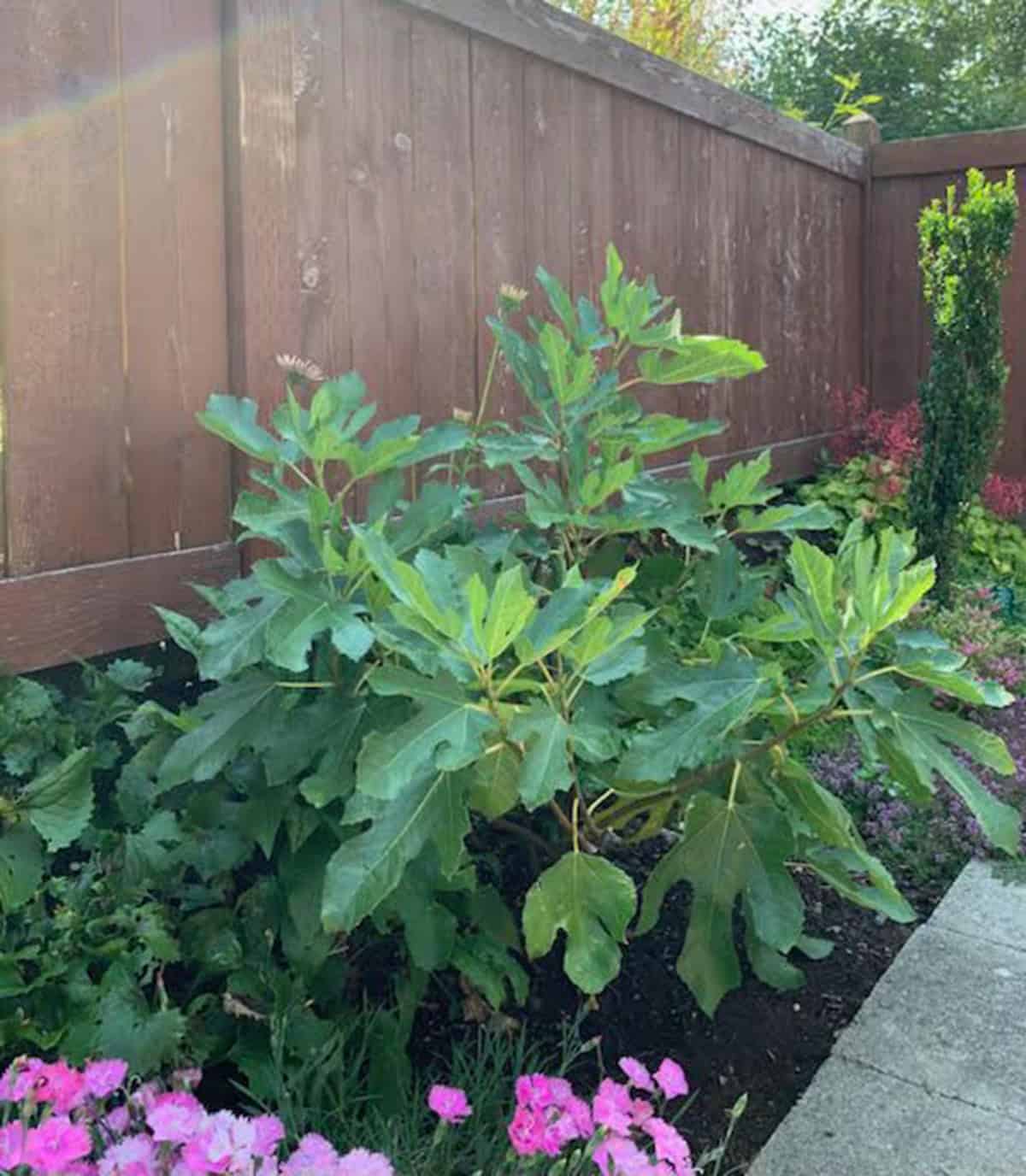
The dwarf fig ‘Little Miss Figgy’ was developed for use in a container. Planted in June, this specimen has thrived in a container on the patio of a home in Mount Vernon. Photo: © Sonja Nelson
![]()
Learn more about Figs and the extensive collection of fruit cultivars at the NW Fruit Open House
On Saturday, October 12 NW Fruit will hold its Sample the Apple and Pear Harvest Day. It is open to members, but anyone can attend by paying a $25 annual membership fee that day. Dr. Cameron Peace of WSU’s School of Horticulture (Pulman) will speak about heritage apple varieties and using DNA to identify varieties. There will be a tour of the many pioneer varieties in the garden and a chance to taste dozens of delicious cultivars thriving in the garden. Bags or boxes of ladder-picked fruit will be available for members to take home in addition to other fruit. Go to the website https://nwfruit.org/apple-pear/ to read more about this event.
NW Fruit is a member-volunteer organization. It includes people who have spent a lifetime growing fruit and people who are just starting on their own journey of learning how to grow fruit successfully. For more information on volunteering, see: https://nwfruit.org
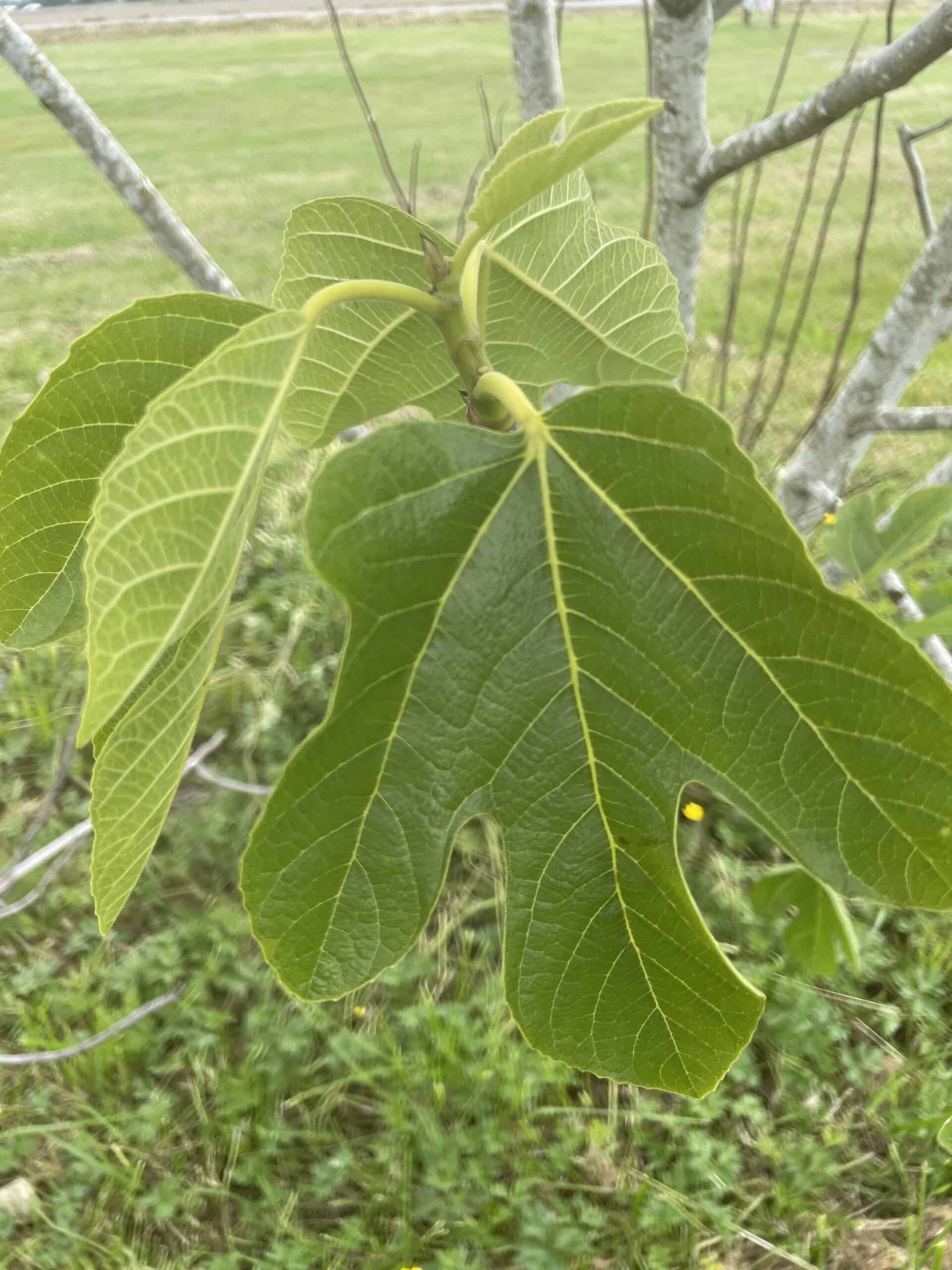
The foliage of ‘Desert King’ fig in the NW Fruit Garden in July. Photo: © Sonja Nelson
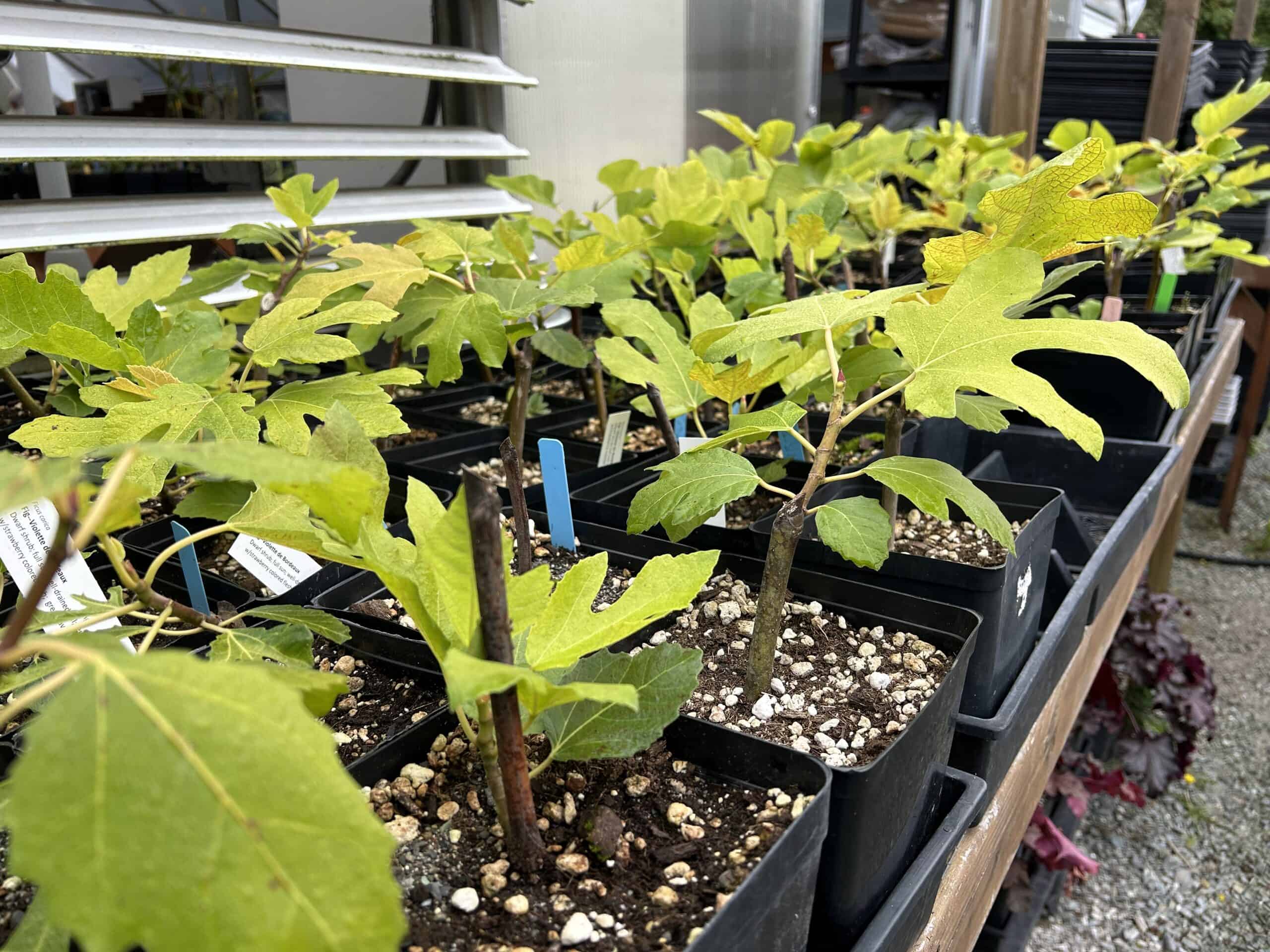
Get started growing figs. Several varieties will be on sale at the annual Master Gardener Plant Fair May 10, 2025 Photo: © Skagit County Master Gardener Foundation
REFERENCES AND RESOURCES:
Benowitz, Sam, NW Fruit Co-Chair. Personal communication, 7/18/ 2024.
Landers, L. How to Grow a Fig Tree in a Pot. Better Homes and Gardens, 5-10-23
Retrieved from: https://www.bhg.com/how-to-grow-a-fig-tree-in-a-pot-7487022
https://nwfruit.org/wp-content/uploads/2016/02/
https://en.wikipedia.org/wiki/Fig
Morgan, P. (2023) Figs in the Home Garden. Pennsylvania State University Extension. Retrieved from: https://extension.psu.edu/figs-in-the-home-garden
Biggs, S. (2021) How to Grow Figs Even in Colder Climates. Fine Gardening. Tauten Press, Newton, CT. Retrieved from: https://www.finegardening.com/project-guides/fruits-and-vegetables/how-to-grow-figs-even-in-colder-climates
Figs and Kiwi Fruit. Snohomish County WSU Extension Community Fact Sheet #46 Retrieved from: s3.wp.wsu.edu>2053/2015/09>46FigsKiwiFruit

Author Sonja Nelson
ABOUT THE AUTHOR:
Sonja Nelson is a Skagit County WSU Extension Master Gardener Class of 2009.
 There is still time
There is still time
to apply to become
a Master Gardener in 2025
Questions about becoming a Master Gardener may be directed to: Skagit County WSU Extension Office, 11768 Westar Lane, Suite A, Burlington, WA 98233; by phone: 360-428-4270; or via the website: https://extension.wsu.edu/skagit/mg/
A Second Act for Your Square 1-Gallon Pots at the Discovery Garden!
Bring your leftover square 1-gallon pots to the Discovery Garden (16650 State Route 536, Mount Vernon). The bin for recycling the square 1-gal pots is located in the parking lot, just north (to the right) of the main entrance.
We only need square 1-gallon pots like the ones pictured below (bottom right). The recycling bin will be available now through fall. Simply put your pots into the bin, and we take care of the rest!
